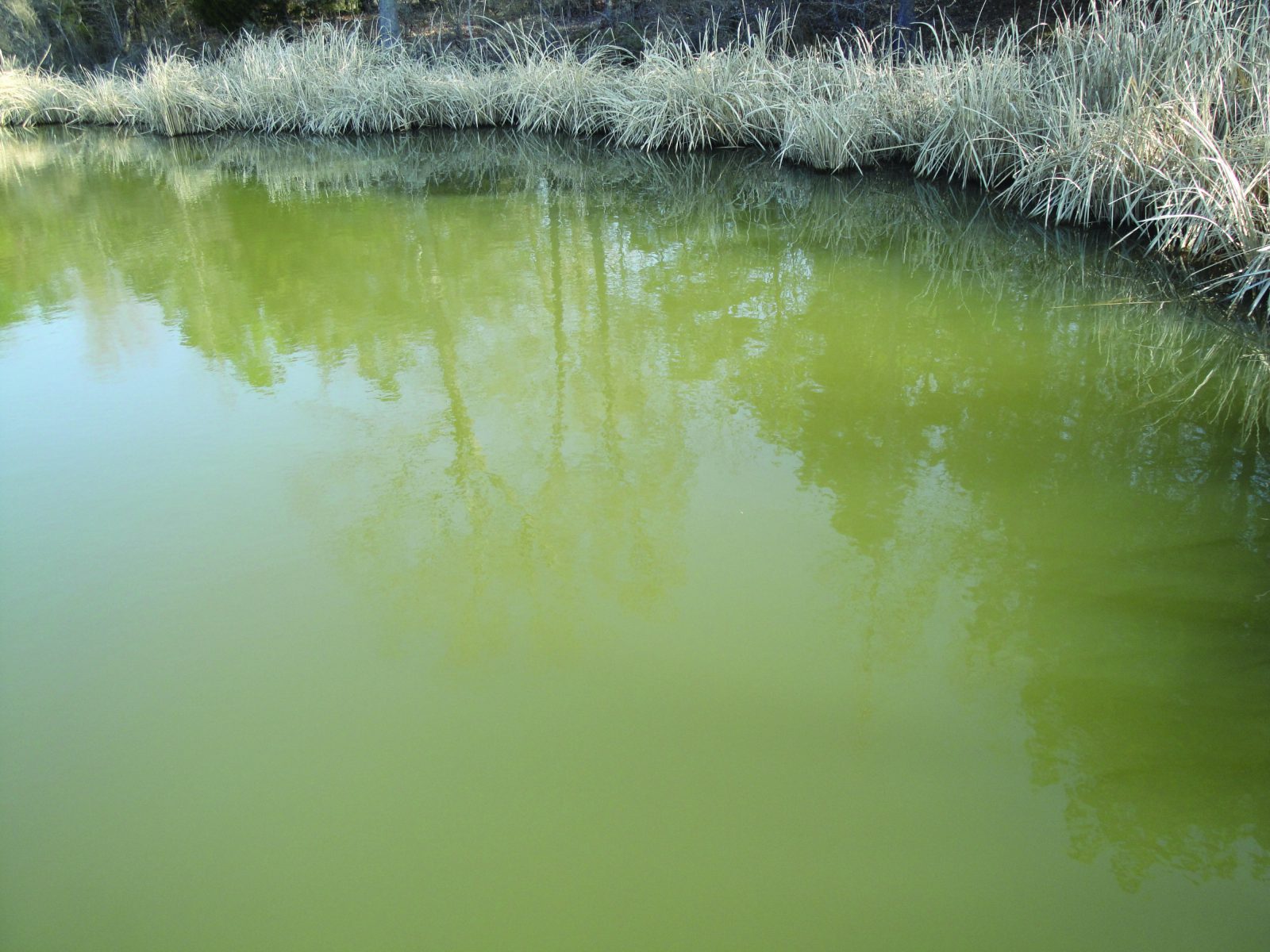
Enhance Your Fish Habitat Through Pond Fertilization
From Industry Experts David Beasley and Aaron Cushing, Fisheries Biologists
Are you looking for a simple way to help your pond hold more and bigger fish? Fertilizing is a great fisheries management technique that will increase the amount of fish a pond can support. Properly fertilized ponds can sustain three to four times the biomass of fish than that of unfertilized ponds. Clear water may be appealing to the eye, but it lacks the backbone of the aquatic food chain: Phytoplankton and Zooplankton. Having a good plankton bloom throughout the growing season allows small fish an abundant food source and helps them to avoid predation.
Fertilizing is a great way to increase the productivity of your pond, but there are a few things to keep in mind before you begin. First, know your ponds alkalinity level. Ponds with low alkalinity should have agricultural limestone added prior to taking part in a fertilizing program. If you do not know the alkalinity, have it tested prior to starting a fertilizing program. Fertilizing also requires a zero tolerance for algae and vegetation. Inspecting the pond prior to fertilizing is an important step towards establishing an ideal fish habitat. Any undesired vegetation or algae should be treated before fertilizing.

Fertilizing improperly can have devastating results. Without sufficient aquatic vegetation and pond algae control, fish kills are always a possibility. Be sure you understand the risks and take the precautions needed to keep your fish safe. Pond aeration is a great way to improve productivity while also taking some of the risk out of fertilizing. If your water quality is correct and the unacceptable vegetation and algae have been eliminated, you will have a much easier time creating and maintaining the desired plankton bloom. When establishing a plankton bloom, fertilizer should be added to ponds in the spring once water temperatures reach a stable 60 degrees.
The Nitrogen to Phosphorous Ratio (N/P Ratio) is an important component to water chemistry and the fertilizing process. Too much phosphorous can promote undesired species of pond algae such as blue-green algae. Some blue-green algae blooms can be visible as thick mats or scum on the surface of the water, while others can be present without visible surface scum. Not only are many blue-green algae species capable of producing toxins, they are also not a good food source for fish. As a result blue-green algae blooms are harmful and do not lead to fish productivity. Testing water quality to identify the N/P Ratio and adjusting fertilizing strategies based on water chemistry is becoming a more common practice.
If you are having trouble establishing a plankton bloom, you can kick-start the bloom by putting plankton rich water in the pond. The best way to do this is to identify a pond with a healthy bloom and then send a sample of the plankton rich water to us to identify the pond algae species. If the algae species are ideal, then you will have more confidence in your decision to move the plankton, and that your decision should lead to greater fish productivity.
FREE REPORT: 6 Reasons to Invest in a Fisheries Management Company
David Beasley and Aaron Cushing are Fisheries Biologists with SOLitude Lake Management. Since 1998, SOLitude Lake Management has been committed to providing full service lake and pond management services that improve water quality, preserve natural resources, and reduce our environmental footprint. Services are available throughout the Eastern United States. Fisheries management consulting and aquatic products are available nationwide. Learn more about SOLitude Lake Management and purchase products at www.solitudelakemanagement.com.









